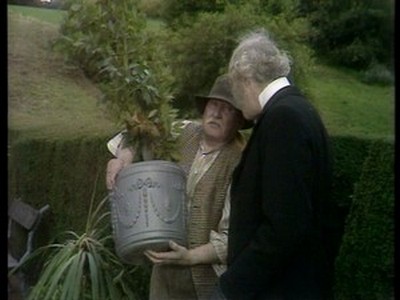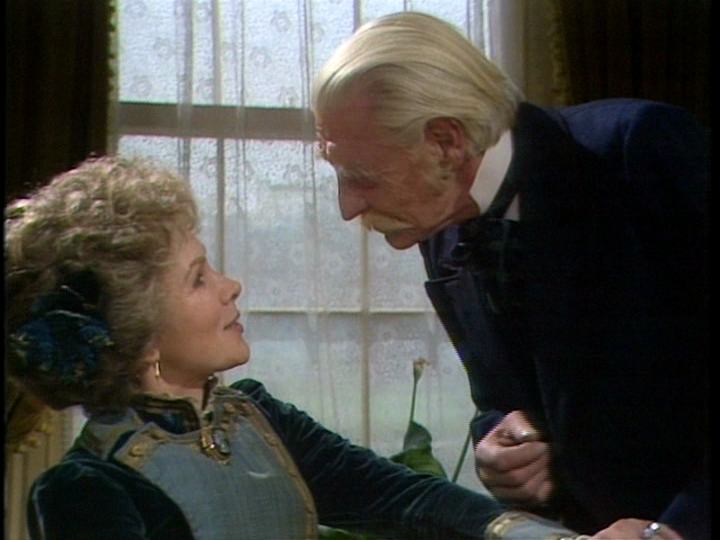
Friends and readers,
A. S. Byatt or Antonia Susan Drabble Duffy (1936-2023) died yesterday, and I want to remember and to praise her work tonight. I direct the reader to the NYTimes obituary which gives the bare facts of her life’s chronology, concise general information about her better known books and famous or celebrity-type autobiographical “information” about her (her quarrel with her sister, Margaret Drabble). Penguin is somewhat better as their obituary tells you how she built her career: through her job/position with Chatto and Windus. This is very like Jenny Uglow who morphed a long career with Chatto and Windus into a far more successful (from the point of view of her readership and the quality of her books) long (in both sense of the term — her books are long and the list of them long) series of brilliant biographies and histories.
Unfortunately when I was reading Byatt’s books avidly, studying them minutely, scrutinizing them by the inch, I was using Write (WRI) files and tonight I have failed to be able to convert these to rtf or txts or word documents. As usual, I don’t know what steps I am omitting. So quite a large number of files from the 1990s are lost to me. I cannot therefore provide details on her style or the structure of her booksor names of characters. Here is what I remember. They tell of how I fell in love with her Possession, A Romance, and among other things, drew a calendar or timeline as well as outlined the interlace of past and presents in the book. I taught it once to a very patient class; looking back I wonder how many of them read the book, a few loved it the way I did and I found some long-saved student papers about it. I loved the long epistolary sections, the journals, the description of Brittany. I knew and know still it is no feminist book, and its woman’s art is like that of Outlander, perhaps even more compromised. Its innermost heroine, Ellen Ashe, has been too terrified of a man’s penis to allow Randolph Henry Ashe, the book’s historical hero, a gentle tender Victorian poet who combines traits of Ruskin, Browning, Tennyson and G.H. Lewes, to ever fuck her. The phenomena of women’s lives are put before us through several heroines in the past and present. The central Victorian heroine, Christabel LaMotte, is modelled on an amalgam, a composite of George Eliot crossed by Charlotte Bronte, with her poetry and isolation making her a Christina Rossetti and imitator of Emily Dickenson.

Another Pre-Raphaelite cover though the story is set in contemporary Britain (for some this might be their favorite novel)
I went on to read another novel I’ve never forgotten, Still Life, written just before Possession, the first book I ever read which described a woman in labor. It gripped me to the last stunning page where our heroine turns into a still life. I tried to convince myself I loved Angels and Insects. I was able to read a great deal of its first novella, about Tennyson’s grief over Hallam’s death as a jump-off about the Victorian obsession over omnipresent death; and of the second novella, a rewrite in some ways of Austen’s Persuasion, a book also bout “the” Victorian obsession with atheism and death, this time with seances. But much of both of them were written in such dense and abstract prose, I could not understand her meaning. The unreadability of this one for me is also found in The Biographer’s Tale (whose hero’s name, Phineas, suggested an Anthony Trollope connection) where the fascination for the author was the relationship between photography and the real presence of people. I could never get into The Children’s Book at all. Babel Tower, another interlaced romance (following upon Still Life) was readable, just, but The Whistling Woman (the next in a Fredericka Quartet) with its extraordinary accomplished woman who nonetheless, is the center of a terrifying violent sexual scene with an abusive husband, and moves into a feminist phase, defeated me. Very frustrating.

Byatt had a French phase: one of the stories is about a teenage girl studying Racine; another Proustian
I had a repeat experience with her short stories: the first volume, Sugar and Other Stories was filled with stunning contemporary stories. I remember one was about an old woman living alone and thus old women as such; “The July Ghost,” was a transfer of her intense grief at the sudden death of her 11-12 year son in a bike-car accident into a powerful ghost story. But as she went on, these short texts also become dense, this time with archetypal imagery, where one was required to parse them rather than read them. They turned away from any realism, and were like paralyzed frozen pictures.
Earlier today I was thinking about her non-fiction narratives because I have been reading one very great one, John Sweet Wood’s The Sewing Girls’ Tale — about a rape in later 18th century New York City, how this morphed into a trial where class came before gender, and then a riot, an attempted suicide, a cause celebre in newspapers of the time, a civil suit &c&c. One of these earlier Byatt narrative non-fictions, UnRuly Times, centers on Wordsworth and Coleridge as real men and poets, as telling more truths about their sex lives than the traditional biographies — and also their personal relationship to their radical politics (insofar as they were radical). I still remember the scene of Dorothy Wordsworth weeping on a couch as in another room her brother, William, and his wife, Mary, were in bed together. Byatt thinks Dorothy and William were lovers (as do a few other Romantic scholars). In her non-fiction narrative books the quality stayed the same as far I can tell, but she didn’t write many.

Now I wonder about these covers — what audience do her publishers think her books appeal to?
Again, I loved her Imagining Characters, a series of conversations with Ignes Sodre about 6 women writers, to wit, Jane Austen, Charlotte Bronte, George Eliot and less centrally Iris Murdoch (about whom she wrote a book), Willa Cather and Toni Morrison (perhaps today I could try to read that). The final conversation is about the relationship of the characters in specific novels to their reincarnation in films, which has some of the most insightful remarks on these writers and adaptation I’ve read. But when I dipped into her literary essays in Passions of the Mind, I discovered them to be very good, but more conventional, the sort of writing you would expect from a Leavisite (her first book was a wooden imitation of D.H. Lawrence). They represent a falling off from Imagining Characters. Much more interesting are her series of lectures, History and Fiction (as she wrote narrative history and historical fiction), though there she finally gave away why finally I couldn’t go further with her (nor she with herself): she looks to “fathers” and “forefathers” as predecessors, with the only women allowed in mainstream 19th century women, two very veiled angry ones (Murdoch and Cather) and Morrison (I do believe because the later novels are so difficult to understand and thus attracted Byatt).
What happened to her, what the explanation for her turning away from an imaginative fictional exploration of the woman’s matter she began with, I do not know. I can’t read the postings and notes I made at the time. Now in 2023 if you look at the list of her books you see a general falling off in the mid-1990s, and a silence for 20 years. I once heard her speak about George Eliot and she talked like she had marbles in her mouth, and was too eager to make her intellectual points — it was on one of those features on DVDs, this one Andrew Davies’s marvelous film of Middlemarch (1994). The one authorized biography by Richard Todd I have tried is discreet to the point of being useless except as the kind of traditional literary criticism which eschewed all disquieting political or autobiographical truths. I see her as a privileged person — the middle class intellectual Yorkshire home, went to the best schools, met her peers as a writer. She says she felt isolated in these places, alone, did not fit in. I will say her sister, whom I’ve written about in my Reveries Under Austen, Margaret Drabble seems to me to have fulfilled her gifts far more steadily and fully. We are told the girls were rivals for their mother’s love and Margaret won repeatedly.
Tonight I wish I had time to try again with The Whistling Woman

In her older years
She was an extraordinarily gifted fictional writer, and for a few years produced a couple of literary masterpieces in the genre of romance fiction, and some fine works of interpretative scholarship. In the early 1990s before I got onto the Internet and was able to reach other people, she made my spirits soar with the beauty of her prose and the passion of her feminine anguish, yearning, hard experiences (these mostly in the first volume of short stories). I felt less lonely with the woman who could write Possession; she seemed to love the books I did, and she reached for an underbelly of the sexually distraught that I have known. Perhaps I should place her in the Austen Reveries blog, but I think she might have preferred this one. Seemingly impersonal. Her official website is devoid of words, offering only enigmatic book covers. Like Ellen Ashe and Christabel LeMotte from Possession, what was she unwilling to tell of. In Still Life there are so many characters phoning crisis centers but we hardly ever hear a resolution of their crises. Its heroine also ends in stillness or death.
Ellen








































